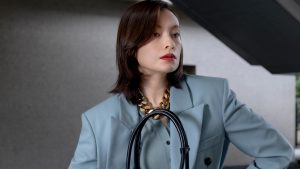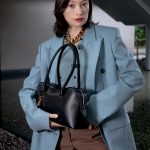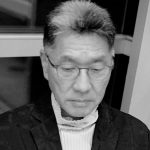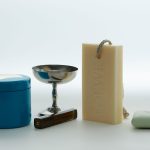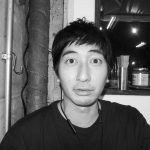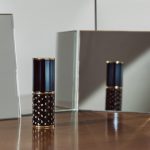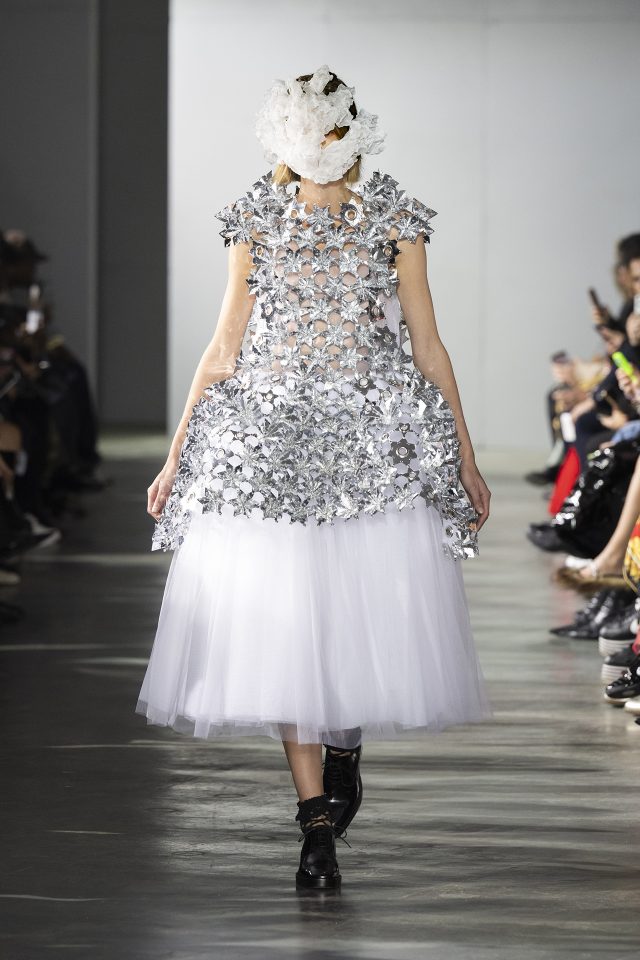NORITAKA TATEHANA デザイナー、舘鼻則孝インタビュー
Noritaka Tatehana
ダフネ・ギネスやレディガガなどのファッションアイコンが愛用することで注目を集めているNORITAKA TATEHANA。今回はその新進気鋭のデザイナー、舘鼻則孝に最新コレクション「ATOM」やインスピレーション源、今後の活動などについて語ってもらった。
NORITAKA TATEHANA デザイナー、舘鼻則孝インタビュー
Portraits
*You’ll find the English text after the Japanese.
ダフネ・ギネスやレディガガなどのファッションアイコンが愛用することで注目を集めているNORITAKA TATEHANA (ノリタカ タテハナ)。今回はその新進気鋭のデザイナー、舘鼻則孝に最新コレクション「ATOM」やインスピレーション源、今後の活動などについて語ってもらった。
—今回のコレクションテーマやコンセプトについて教えてください。
今回はミニマルに原点回帰したというイメージです。本当に必要な要素以外を削った時に最終的に残るものは何かということを考えました。海外で活動する機会が多いのですが、日本の震災や原発のことを聞かれたり心配されることが幾度もあります。ファッションが持つモチベーションというかみんなを元気にする力、それは誰しもが求めていることではないかも知れないけども自分にとっては今まで通り活動を続けるということしか考えられなかった。海外で日本人の自分が注目されるということで日本が注目されると思ってます。ただ、ファッションには表面的なイメージが強くあります。もちろん、そのような側面もあるのですが、もっと内面的なことだったり、どのようなものを美しく見せるか、どのように感じて欲しいかという提案もできると思うのです。僕は彫刻や絵画などの芸術を勉強してきたのですが、人間が持つ美しさが自然の美しさであり、それが一番の強さだと思いました。何も纏わない、裸の状態が最も綺麗かもしれないって。だから、無駄なものを省いた時、最終的に何が残るのか、人間は何を残せるのかが重要だと思います。そのため、このコレクションは身体のかたちというイメージで製作しました。今まではシームがあったりパターンに思考を凝らしたりさまざまなことをやってきましたが、今回はそういうものをとっぱらってみたのです。ATOMとは分割できない最小単位なのですが、最小単位で生活することが一番シンプルで、ある意味理にかなっているのかなと。人間は多種多様なものを必要にかられて生み出してきましたが、今は生み出したものが多すぎて、まとめきれなくなっている状況だと思います。必要なものはそれでいいと思いますが、その動機が不純にならないようにという意味で原始時代に戻った感じです。裸で過ごしている民族もいたわけですし、そういった感覚で考えてもらいたいですね。とにかく、時代に合ったということが重要だと思います。
—そういったコンセプトを、どのようにデザインへ反映しているのですか?
最初に思いついたのがニーハイブーツ。続いて、一方がシンプルで、もう一方がそれを少し変形させたものを対にしたアンクルブーツ。また、足形をそのまま用いたり、骨格が見えているようなデザインを取り入れています。テクニック的な部分では、毎回同様にアッパーなりライナーを自分で全て染めて、色の調合をしたり、赤いライニングは人間に流れている血をイメージしたりしています。加工に関しては、今回、とにかくシンプルにしました。その代わり、メンズシューズようなしっかりした構造体になっていたり、光沢のあるレザーの磨きに時間をかけたりしています。ちょっとしたデザインを取り入れているのは人間の変身願望じゃないですけど、違う自分になれるきっかけを表しています。
—インスピレーション源について聞かせてください。
海外で活動する日本人として考えた時、やはり日本の文化は外せないですよね。東京芸術大学で染織、友禅や花魁の研究をしていたこともあり、根底にあるのは花魁下駄です。今回のテーマはATOMですけど、毎回コレクションのテーマを決める際、現代的な衣装と言いますか、話題になっていることや現在でしか生まれないようなことを取り入れるようにしています。そういった時代性やナショナリズムとのバランスが非常に重要です。今の日本はさまざまな文化や人種が入り混じっていたり、日本人も和服じゃなくて洋服を着たり。それもどんどん変化しているので、常に新しいものが生まれるきっかけになっていると思います。どうしても日本人は舶来主義なので、国外のものに対して謙遜しがちです。外国の方もそうなのかもしれませんが、日本人は特にそういう思考が強いから、次第に日本の文化が廃れていくのはもったいないように感じています。もちろんきかっけは戦争にあるわけですが、今から過去のことは変えられないのでこれからの時代や文化を構築していくしかありませんね。僕はそういう意味でも日本にとても可能性を感じています。時代が変わっているのに、作り手だったり、作っているものが変わっていないパターンが多いので、若い人たちやクリエイティビティを持った発信できる立場にいる人たちが、積極的に新しい形として進化させてなければいけないですよね。現代の人たちに認知されていないということは、時代に合っていないということなのです。それを時代に合わせた手法で、時代に合った人に使ってもらうことも文化構築の礎としてすごく重要な要素だと思います。たとえば今回も香木を作りましたが、このタイミングでリリースすると逆に新しく感じる。それぐらい空白の時間や期間があるということですよね。そういったことをきちんと新しく文化として定着させていきたいですね。
—ものづくりへのこだわりはありますか?
自分で素材を選び、自分で染めて、全て日本で製作することです。普通デザイナーだったら生地を探して、その生地でサンプルを作って製品化するという流れですが、僕は素材から作ることが多いので、素材に関する知識だったり特性を知ることから始め、それを最大限生かすことを心がけています。今回はシームレスな形を製作したので、伸縮性が重要でしたね。どの革でもできるわけではありません。そういった意味では素材や色全てに必然性があったと思います。ただ単に選んで合わせるのではなく、素材作りから手がけていることにこだわりを持っています。
—素材からアイデアが生まれることもありますか?
以前のコレクションにエイ革のものがあるのですが、昔から日本刀のつかだったり、わさびを擦るために使われる、日本の素材です。グリップが効くということで刀のつかに用いられたり、さまざまな理由があるわけですが、日本には面白いものがたくさんあると思います。そういった素材からインスピレーションを受けるというパターンもありますね。でも、ノープランで材料屋さんに行くことの方が多いです。そこでぱっと思い浮かぶこともありますし、そういったことも重要ですよね。だから、わざと何も考えずに行くこともあります。
—デザインをする上で、アートや芸術の影響力は強いですか?
どちらかというとアート思考が強いと思います。専門的なファッションの勉強はしていないですし、靴の作り方も誰かに教わったわけでもありません。ただ、ファッションとアートは違うものだと思います。だから、アーティストとブランドのコラボレーションという融合はできますが、アートとファッションが融合することは非常に難しくて、それらが一つに混在するということはマーケットも違うし、内容も一致しないと思います。僕はアーティストではなく、ブランドディレクターやファッションデザイナー、職人としてやっているという感覚です。日本にいると作品がアートのようですねと言われることが多いのですが、実際、僕はアートとして作っているつもりはありません。履けるものとして製作していますし、実際に履いて使用してもらいたいので。用途のないものがアートというわけではないですけど、やっぱりそこには一線交わらない部分があると思います。だから、一緒くたにしているつもりはありません。
—日本と海外でのニーズに違いはありますか?
日本人はどうしても履くシーンを考えてしまいますが、逆に外国だと履くシーンを作ってしまう。パーティーに呼ばれるからこういう靴が欲しいというのではなく、自分が履きたい場所があって、そのシーンを頭の中で構築していると思います。日本人は何かに合わせたくなってしまうから、どこで履こうかと考えてしまう。でも、海外の方は自分でライフスタイルをクリエイトしているように感じます。日本ではあまりヒールの高いものは売れないですが、海外では大きなサイズも作っているので男性の方にも買って頂いていますよ。ボーダレスなのでしょうね。
—履いてほしい人物像はありますか?
こういう音楽を聴いて、こういう雰囲気の人に履いて欲しいという、ビジュアル的なものないのですが、今日は自分が主役だからこの靴を履きたいと思ってもらえたり、少しでもその人の力になれるのであればすごく嬉しいです。そういったちょっと一歩前に出たい人に履いて欲しいですね。
—ファッションの可能性についてどのように思いますか?
一人一人のアイデンティティをより象徴するようなものを、それぞれが選べるような世界になったらいいですよね。そのためにファッション業界がもっと沢山の種類を作ればいいというわけではなく、お客さんのニーズだったり嗜好性に合わせたものを作っていけたらいいなと。ただ新しいだけではなく、より時代性のあるもの。この服を着た時、こういう時代だったよねと言えるくらい、今の時代でしか作れないものを生み出したいです。今日と明日では違うかもしれないですし、2年前に作ったものは今年作ったものと印象が違います。でも、やっていることは今も一緒で芯はぶれていません。変わっているけど、中身は一緒という感覚を持って製作したいなと思っています。
—今後の活動について教えてください。
現在動いているプロジェクトがあります。近い将来ディストリビューションとしての商品が発表されるかもしれません。それに伴って、僕が作っているコレクションラインのものはよりハイエンドな方向に進むかもしれませんね。それはただ派手になるということではなく、作りの部分だったり、お客さんが喜んでくれるような仕組みにより一層厚みが増したらいいなと思っています。
<プロフィール>
舘鼻則孝 (たてはな・のりたか)
1985年、東京の中心にある歌舞伎町という歓楽街で歌舞伎湯という銭湯を生業とする家系に生まれる。父は自らの会社の代表取締役で母はシュタイナー教育に基づくウォルドルフドールの制作を教える講師である。幼少期は鎌倉で育ち、15歳の時より洋服や靴の制作を独学で始める。東京藝術大学では絵画や彫刻を学び後年は染織を専攻し、花魁に関する研究とともに日本の古典的な染色技法である友禅染を用いた着物や下駄の制作をする。2010年自身のメゾン”NORITAKA TATEHANA”を設立。全ての工程をデザイナー自らの手仕事により完成される靴のコレクションがファッションの世界にとどまらずアートの世界でも注目されている。LADY GAGA や DAPHNE GUINNESS が作品を愛用しているという事も周知の通りである。
Noritaka Tatehana, the mastermind behind the sensational heelless shoes famously worn by Daphne Guinness and Lady Gaga, showed a sneak preview of his new 2012 collection titled ‘ATOM’ in Tokyo. The Fashion Post spoke to the creative talent about his latest pieces, inspirations and future plans.
—Tell us about the concepts behind the new 2012 collection.
The collection is about going back to doing something minimal – thinking of what would happen when objects are stripped down to their bare foundations. When travelling to other countries for work, I’ve had many people asking me about the effects of the March earthquake and the nuclear plants which were struck. I believe fashion has the motivation and power to make people feel happy. This may not apply to everyone, but all I could think of at that time was to keep doing what I do best. I thought, “Hopefully, the more international recognition I gain, the more people will want to know about Japan.” I often get the impression that fashion is seen as decoration and adornment only. That may be true in some senses, but to me, fashion is about a certain spirit. It’s about making things look beautiful and offering an emotional experience. Having studied art (including sculpture and painting) at university, I’ve discovered that true beauty and real strength lies in the human form. I believe that “the naked body is the foundation of ultimate beauty”. I think the most important factor is what remains and what we could hand down when we are shed to the core. The collection plays with the appreciation of the human form. I’ve experimented with plenty of seaming and pattern-making for the past few seasons, but that has been put aside for now. An atom is the smallest particle; I have found the most simple and efficient way of life through the fundamentals of minimalism. The growing demand for convenience has led to excessive inventories and people are now starting to question our modern disposable society, a world overloaded with product choices. That’s okay, if it’s a necessity, but to keep my motives clear, I decided to look back to more primitive ways of living instead. Some ethnic groups do not feel the need to wear clothes and I approached these designs in a similar way. However it is important for me to have an idea going along at the time in regard to be an indicator.
—How are these ideas reflected in your designs?
I came up with the knee-high boots first and then went on to design the two ankle boots, one simple and the other deformed. Key designs included the sculptural forms of a foot and bone-like surfaces. As for techniques, I’ve hand-dyed the upper and lining leathers and blended the colours myself, as always. The red-coloured lining reflects the blood running through the human body. Surface textures are kept simple, but they have a subtle masculine edge with shoe structures inspired by men’s designs. The polished leather was also handled with care. The aspect of subtle ‘design’ mirrors the human desire for transformation and the opportunity to become a new person.
—Where does your inspiration come from?
As a Japanese designer who shows in various countries, I like to include hints of Japanese culture in my work. Having studied traditional fabric dying, yuzen designs and oiran at Tokyo University of the Arts, my design roots lie in the oiran geta sandals. Each season, when I’m deciding on the new theme or concept, I try to create a so-called “modern costume” that reflects the feel of the moment and with details that can only be developed at that time. The balance between timeliness and nationalism is another key element to my designs. Japan today is a melting pot of different nationalities and cultures. People are wearing modern clothes instead of kimonos and the country continues to change and develop while new possibilities open up. Japan has a tendency to rely on imports. On the contrary, people tend to be modest about anything domestic. This characteristic may apply to some other countries as well, but I think it is particularly evident here. Because of this, Japanese culture is starting to fade and vanish, which I think is a shame. This is perhaps something to do with the war, but as we cannot change the past, I feel we need to look to the future and start building a better life and culture as I see big potential in it. When entering a new era, it is important for the craftsmen and their products to adjust to the real world. So far, they haven’t been especially successful here. The new generation and influencers in the creative process need to find a way to move things forward. If a product lacks recognition, it means that it’s no longer valid. Using updated techniques, we need to reinvent that product and make it appealing for modern Japanese consumers. This, I believe, is one of the most important elements in creating the new platform for Japanese culture. For example, I’ve produced a Japanese incense, kouboku (a piece of naturally scented wood), for my latest collection. Although the item already has a long history in Japan, it still looks new and fresh because of its current unfamiliarity. That’s how much of a gap there is. I would like to help develop and establish those ideas, making them part of Japan’s new culture.
—What things do you consider when you’re designing?
I select and dye the materials myself and the whole creative process takes place in Japan. Most designers would choose a material, create a sample and send it away for production, but I prefer to be involved from the start, from truly understanding the material to enhancing its natural quality. The latest creations are seamless, so the focus was on elasticity. This property can’t be achieved by just any material. Therefore, each element plays an equally powerful part in the whole creation. So to me, it’s not about mixing and matching. It’s about careful consideration and being involved in every process of the production.
—Do you also take inspiration from materials?
In one of my past collections, I’ve created a pair of shoes made out of stingray skin. Stingray skin is a traditional Japanese material and its unique texture is used for the grip of a katana (Japanese sword) and wasabi graters. There are many other interesting materials in Japan, so yes, I do sometimes take inspiration from materials. But most of the time, I just visit the stores without a plan for instant inspiration. I think this is important to design too.
—How important is art as an inspiration for you?
If anything, I have strong leanings towards art. I didn’t study technical fashion design at university and I haven’t had any training in shoemaking. But I think there is a certain line between art and fashion. Artists and brands can create a fusion through collaborations, but merging art with fashion is a different story. They are created for different markets with different content and cannot be mixed together so easily. I see myself more as a brand director / fashion designer / craftsman than an artist. In Japan, I’ve had people say that my creations look like a piece of art, but producing art is not my intention. I produce wearable pieces that can be worn by real people. This doesn’t necessarily mean art pieces are not wearable, but that is where I see the difference. And I prefer not to mix the two.
—What are the differences between Japanese customers and overseas customers?
Japanese consumers tend to base their purchasing decisions on specific occasions they have in mind, whereas overseas customers simply create an occasion for the shoes. They are not buying because they have been invited to a party, but because they already have a specific place they want to wear them to. Japanese consumers worry if the shoes would fit in with the rest of their wardrobes and if they would ever have a chance to wear them, whereas overseas consumers create a new original look. Also, super high heels are not so popular in Japan, but overseas, I’ve even seen male customers buying my shoes.
—Do you have a muse?
I do not have an ideal customer. I would rather support the wearers of my designs by giving them a confidence boost. I’d like to create the kind of shoes you would want to wear on a special day and for people who want to stand out from the crowd.
—What is the future of fashion and where do you see it going?
I’m hoping for a future where each of us will be able to choose an item that represents our identity. And to fulfill that vision, the fashion industry will need to offer designs that can satisfy the needs and tastes of each consumer without increasing the amount of clothes they produce. I would like to see more clothes that are not only new but are also timely and could only have been made at that moment. The clothing range may differ from today and tomorrow and items produced two years ago would look different from what has been made today, but the general philosophy should remain the same. This is what I try to achieve in my designs, to create items that look different by time but which share the same characteristics.
—What are your future plans?
I have several projects on the go at the moment. There might be new distribution deals and a new range launched in the near future. The main collection range might move upwards towards the luxury end through those means, but that doesn’t mean it would then become more extravagant. I’m hoping to design more shoes with that certain special detail or something which will put a smile on our faces.
<Profile>
Noritaka Tatehana was born into a family who ran ‘Kabuki-yu’, a public bathhouse in Kabukicho, an entertainment district in the center of Tokyo. His father is currently a president of a company and his mother is a Waldorf doll instructor (these dolls are used in Waldorf or Steiner education). Noritaka was raised in Kamakura. He initially started making dresses and shoes when he was 15, having taught himself. He studied Fine Arts and Sculpture at Tokyo National University of the Arts, later majoring in dyeing and weaving. He conducted research on oiran, the high-ranking courtesans from the Edo period [1600s to mid-1800s]. He also created kimonos and getas [Japanese clogs] using yuzen, a traditional Japanese dyeing method. In 2010, he established his own maison: ‘NORITAKA TATEHANA’. Every step in the manufacturing process of his shoes is overseen by the designer himself. His collection pieces are hugely admired in the fashion industry and they also command attention from the art world. Lady Gaga and Daphne Guiness are well-known fans of his work.
